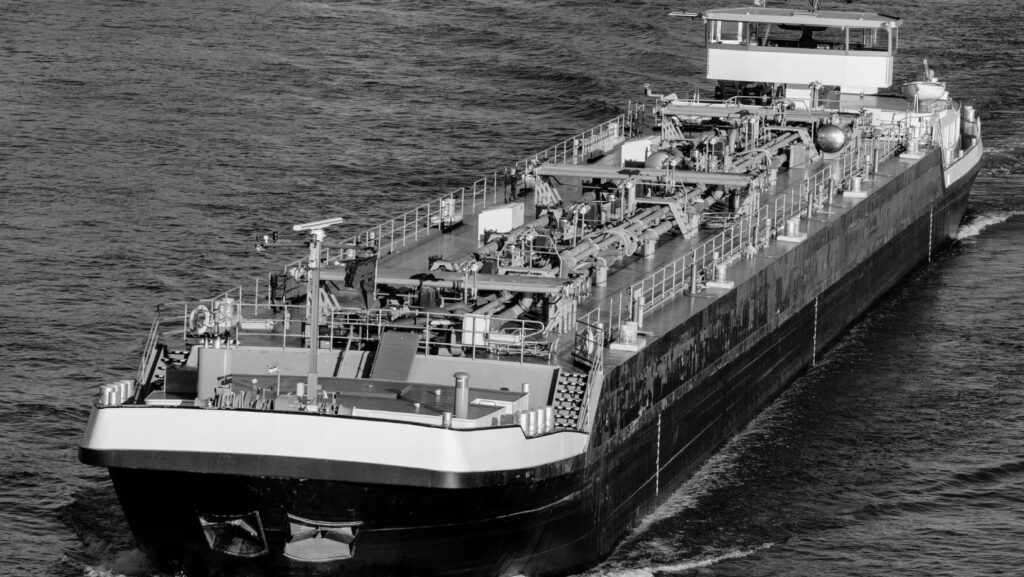
At first glance, contracts might seem pretty cut-and-dry—and certainly not the key to efficient barging operations. But contracts are more than legalese: They can help both parties clear up misunderstandings before they occur and create contingencies for unlikely events that could have serious financial repercussions. As a result, getting freight contracts right can help boost profitability and reduce risk in barging operations.
(As a reminder, we are not lawyers, and this should not be considered legal advice. Always consult with your lawyer before entering into any contractual agreements.)
Freight Contract Basics
Every freight contract should feature a few core sections to ensure you have a complete record of the expectations for each shipment.
1. Cargo to be shipped
2. Handling instructions
3. Pick-up location
4. Final destination
5. Transport rate
First, you should include a description of the cargo being shipped, which can range from bulk commodities to specialized materials. Each requires different handling and storage considerations, which should be reflected in the contract language. You should also include special provisions for perishable or hazardous goods to ensure that any additional handling requirements and fees for these are represented.
Next, specify the pickup location, such as a specific dock or port, and the cargo’s final destination. Another essential element is the transport rate, which details the cargo’s cost, often influenced by distance, cargo type, and market conditions. By including these elements, you can improve clarity for both the shipper and the carrier and set clear expectations about the transport operation. To see these principles in action, check out these great sample contracts here and here.
Handling Contingencies in Freight Contracts
Handling contingencies in your freight contracts is one of the most important things you can do to protect your business and help ensure smooth transactions. Below are some of the most important areas to cover. Remember to include language covering contingencies regardless of how likely they are to help reduce your liability if something unexpected occurs.
Late Delivery:
One of the most critical contingencies to address is late delivery. You may want to include provisions for compensation or discounts to the shipper in the contract if the shipment is delayed. The provisions to include often depend on the reason for the delay and the terms agreed upon in the agreement. For example, you may not need to cover delays due to inclement weather or the shipment not being ready on time at the pickup point. However, those due to controllable delays on the carrier’s part would likely need to result in compensation.
Demurrage:
A related concept is demurrage, which specifically relates to delays in loading or unloading beyond the agreed time, including compensation or penalties. Adding a section about this can help ensure that you’re able to load your barges and leave on time. Failure to do so can have a significant negative impact on profitability.
Order Cancellation:
Cancellation terms are usually predefined. You may impose penalties or fees depending on the timing of the cancellation and the reasons behind it. Some contracts might allow for more flexibility than others, depending on the relationship between the shipper and carrier and the specific nature of the delivery.

Dispute Resolution:
Disputes are typically handled through a defined process in the contract. This process can include negotiations, mediation, or arbitration. The contract may specify the governing law and jurisdiction to resolve disputes—usually, the state in which the carrier is based.
Damage to Cargo:
Specifies liability for damaged goods during transport and how claims will be filed. It should also indicate when and how cargo should be inspected for damage to ensure both shipper and carrier share an understanding of cargo condition—typically when cargo is transferred between hands at the beginning or end of a trip.
Environmental Compliance:
This section addresses responsibility for environmental regulations and the consequences of non-compliance. Environmental compliance language is especially important when handling potentially hazardous materials to prevent accidents and address liability in the event they occur.
Force Majeure:
This clause outlines conditions under which parties are excused from obligations due to unforeseen events beyond their control, such as natural disasters, and stipulates notification requirements in such scenarios.
Insurance Requirements:
This segment details the type and extent of insurance coverage required for the cargo, including minimum coverage levels and specific risks that must be covered, like theft or natural disasters.
Delivery Logistics
While the contingency handling portions of a contract may remain relatively static, you’ll need to revisit some sections for every shipment. As a result, carriers will generally need to reach an agreement with shippers in the following areas:
Cargo Specifications:
Given the varying nature of shipments, details like type, quantity, and special handling requirements of the cargo are subject to change.
Route and Schedule:
The specific route and schedule can vary based on logistical needs and availability.
Rates and Payment Terms:
These might fluctuate due to changes in fuel costs, market demand, or specific cargo requirements.
Loading and Unloading Locations:
Depending on the nature of the cargo and client requirements, these locations may differ for each trip.
Ballasting a Barge:
This section details whether the carrier will adjust the water level in the barge’s ballast tanks to ensure stability and optimal draft and any related fees.
Disposing of Excess Cargo:
Procedures for handling and disposing of cargo that exceeds the agreed quantity or is rejected at the destination.
Drayage:
Transport of cargo over short distances, typically from a port to a nearby location, and any fees related to the operation.
Elevation:
Refers to raising cargo to a higher level, usually necessary in loading or unloading, and any fees related to the operation.
Loading/Unloading of Cargo:
Details how cargo will be loaded and unloaded, including responsibilities and timing.
Fuel Surcharges:
Additional charges may apply due to fluctuations in fuel prices.
How BargeOps Helps with Freight Contracts for Barges
As you can see from the sections above, freight contracts for barges can be very complicated. If you’re just getting started with your contracts or need a way to streamline the process, BargeOps Freight Contract can be a huge help. With support for origin and destination-based freight rates and scheduled rate escalation, demurrage and force majeure support, and draft-based tonnage calculations, BargeOps can help streamline the process and help ensure you’re being thorough throughout. Plus, it comes with a contract document library to help you get started faster with your next round of contracts. To learn more about what Barge Ops can do for you, schedule a free call today.

